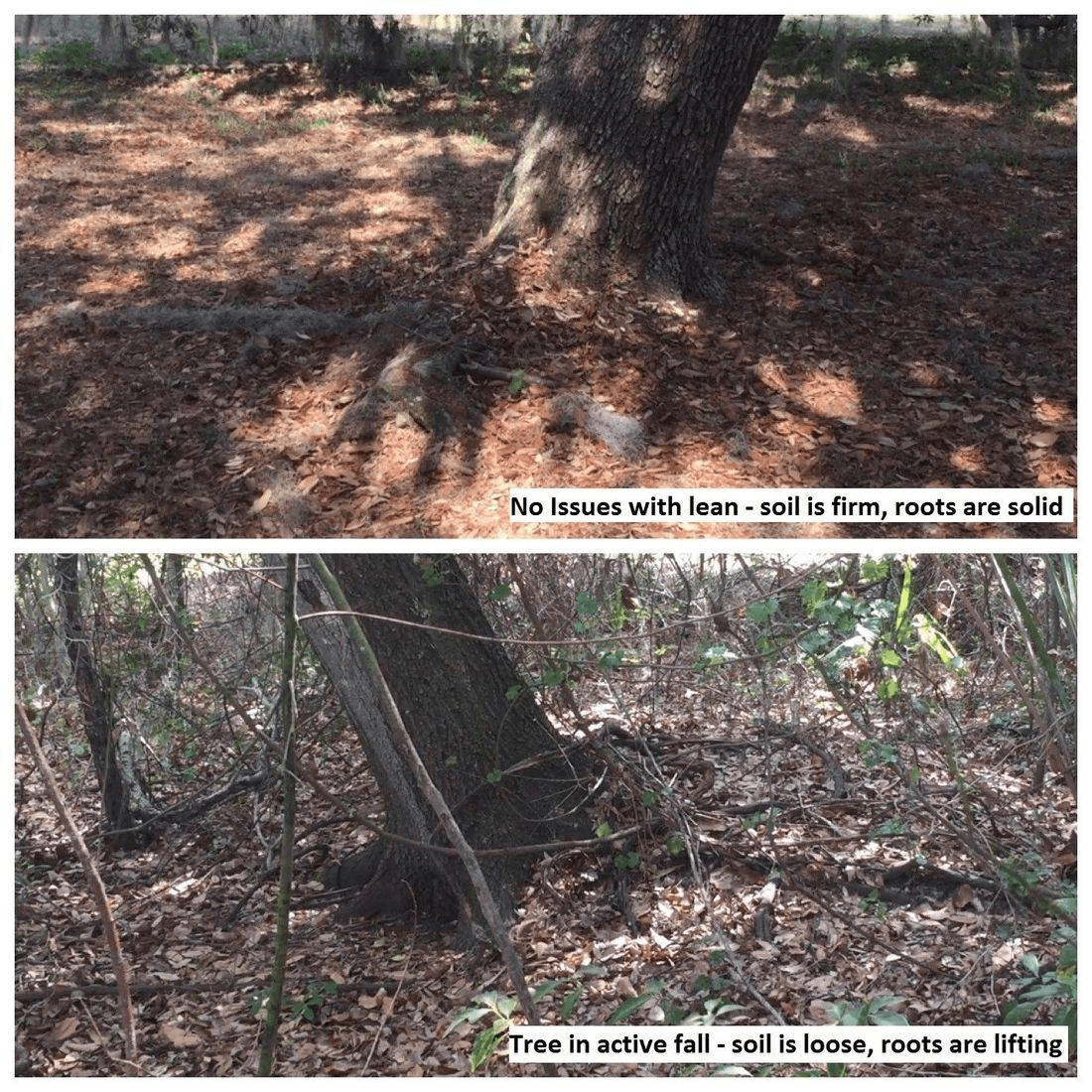Root Plate Awareness

Just because a tree is leaning, it does not automatically mean that the tree is falling. Make sure to familiarize yourself with your trees and their ground space so you are able to notice changes in soil firmness and density.
- First, visually assess the ground around your tree. Seeing raised roots does not immediately indicate issues although you would want to take note of their placement and overall look.
- Second, stomp around the tree and checkout the soil for any soft areas (areas where the soil is loose). If the tree is leaning, spend extra time checking the soil around the "tension side" - this is the side opposite the side of the lean. You want to always feel firm ground.
- Third, use a probe to check for air pockets under the roots and soil. attempt to insert the probe into the ground checking for hallows (air spaces). Again, you should always feel firm ground. A screwdriver or shepherds hook could be used for this activity.
We suggest that you check your trees every six months to ensure that they are firmly in their soil! Additionally, you should always check your trees roots after a major wind event - trees are subjected to strong winds during storms, causing them to twist and sway in many different directions. It is critical that you assess your trees after a storm!
If you think you have soft or rotten roots, soft soil areas, suspect that you have air spaces under your trees roots, or are concerned that your tree is starting to uproot, please give us a call. We will come out and fully evaluate the situation.
To see a live demonstration of checking your root plate, follow this link:

